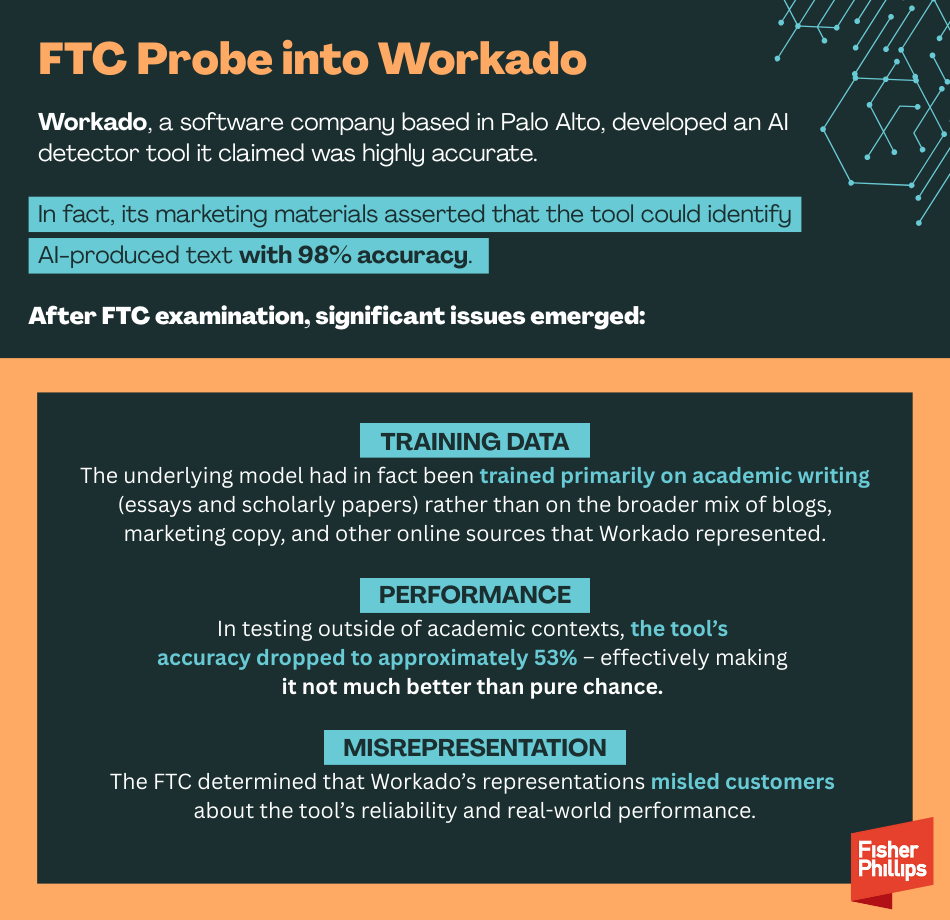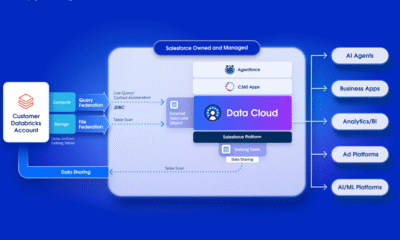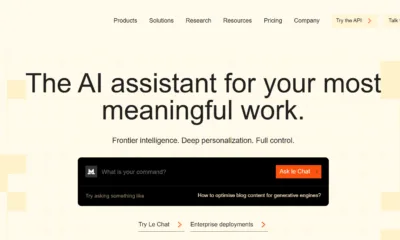Tools & Platforms
AI Dominance, Quantum Rise, and Green Innovations

Emerging AI Dominance in 2025
As the technology sector hurtles into 2025, artificial intelligence continues to assert its dominance, evolving from experimental tools to core business infrastructure. Recent reports highlight how AI agents are automating complex tasks, from coding to financial planning, reshaping industries at an unprecedented pace. According to a detailed analysis in McKinsey’s technology trends outlook, agentic AI stands out as a frontrunner, enabling systems that not only process data but also make autonomous decisions. This shift is prompting companies to rethink their operational models, with cloud giants like Microsoft and Amazon ramping up investments to monetize AI infrastructure after years of subsidizing development.
The implications for executives are profound, as these advancements demand strategic pivots toward scalable AI deployment. Posts on X from industry observers underscore a growing sentiment that AI’s integration with IoT and blockchain will drive real-time business intelligence, expanding its role beyond support functions. Meanwhile, the World Economic Forum’s list of top emerging technologies for 2025 places AI at the forefront, predicting massive impacts on daily life through enhanced machine learning algorithms.
Quantum Computing’s Quiet Revolution
Quantum computing, once confined to theoretical discussions, is gaining practical traction this year. Innovations in this field promise to solve optimization problems that classical computers struggle with, particularly in areas like cryptography and drug discovery. A recent post on X by tech analyst Maximus Kamau highlights quantum’s advances in boosting security for healthcare and finance, aligning with broader trends toward data transparency.
Industry insiders note that geopolitical tensions are fueling R&D in quantum technologies, as nations vie for supremacy in semiconductors and related fields. WebProNews’s overview of 2025 tech trends emphasizes how quantum computing intersects with sustainability efforts, offering efficient solutions amid regulatory pressures. Companies are now allocating budgets to quantum-ready infrastructure, anticipating a tipping point where these systems become commercially viable.
Sustainability Drives Tech Innovation
Sustainability has emerged as a critical driver in technology’s evolution for 2025, with firms prioritizing eco-friendly practices amid tightening regulations. Electric vehicles and green data centers are at the forefront, as outlined in Reuters Tech News, which reports on global efforts to reduce carbon footprints through innovative materials and energy-efficient computing.
This focus is not merely compliance-driven; it’s a competitive edge. Analysis from Simplilearn’s emerging technologies guide suggests that sustainable tech will create new job markets, even as automation displaces others. On X, users like Phil Nott reference McKinsey’s insights on how robotics and edge computing contribute to greener operations, reducing waste in manufacturing and logistics.
Layoffs and Workforce Shifts Amid AI Boom
The rapid adoption of AI is not without its human costs, as evidenced by widespread layoffs across the sector. Major players such as Microsoft, Intel, and TCS are restructuring to align with an AI-driven future, resulting in thousands of job cuts. India Today’s feature on tech layoffs details how economic shifts and automation are forcing these changes, with firms like Intel slashing positions to fund AI initiatives.
For industry insiders, this wave of downsizing signals a broader transformation in workforce dynamics. Posts on X from investors like Oguz O. point to AI infrastructure as a key investment theme, where cloud providers are poised to capitalize on monetization strategies. Yet, this comes at the expense of traditional roles, pushing professionals toward upskilling in areas like AI ethics and quantum applications.
Blockchain and Connectivity Horizons
Blockchain technology is experiencing a renaissance in 2025, integrated with AI for enhanced transparency in supply chains and finance. The Economic Times Tech News reports on how these integrations are fostering secure, decentralized systems that combat fraud and streamline transactions.
Looking ahead, 6G connectivity promises faster, more reliable networks, enabling innovations like autonomous robotaxis. A tweet thread on X by K. K. outlines how 5G evolutions will support these breakthroughs, with Level 5 autonomy in vehicles becoming a reality. Gadgets 360’s latest updates echo this, noting the interplay between connectivity and AI in transforming urban mobility.
Navigating Geopolitical and Regulatory Challenges
Geopolitical rivalries are intensifying competition in tech, particularly in semiconductors and electric vehicles. The New York Times Technology section provides in-depth commentary on how U.S.-China tensions are accelerating domestic R&D, with implications for global supply chains.
Regulatory scrutiny is another hurdle, as governments impose stricter rules on data privacy and AI ethics. Insights from Big Valley’s top conversations in tech reveal a shift toward compliance-focused AI deployment, ensuring scalable and secure innovations. Industry leaders must balance these challenges with opportunities, fostering resilient strategies for the year ahead.
Investment Themes and Future Outlook
Investment in AI infrastructure remains a dominant theme, with cloud giants like Google and Alibaba expected to lead monetization efforts. X posts from Miles Deutscher predict that AI agents will dominate narratives, potentially creating billion-dollar markets in DeFi and on-chain trading.
As 2025 unfolds, the convergence of these technologies—AI, quantum, blockchain, and sustainability—will redefine competitive advantages. Drawing from
Tools & Platforms
Government Puts AI Companies on Notice About Boastful Advertising: 5 Practical Lessons for the Tech Sector | Fisher Phillips

In a wakeup call to tech companies that develop artificial intelligence products, the Federal Trade Commission (FTC) recently cracked down on a large AI software company that couldn’t back up its AI-related claims with actual evidence of success. The August 28 final order is a good reminder that long-standing advertising principles apply equally to both traditional businesses and those marketing AI products and services. What happened in this case and what are five practical lessons tech companies can take from the government action?
Software Company Makes Bold Claims About AI Products – and Government Took Notice
Workado, a software company based in Palo Alto, developed an AI detector tool it claimed was highly accurate. In fact, its marketing materials asserted that the tool could identify AI-produced text with 98% accuracy. This claim is particularly striking given that educators, publishers, and businesses are actively seeking reliable methods to distinguish human-authored content from text created by generative AI.
When the FTC examined Workado’s claims more closely, however, significant issues emerged:
- Training Data: Although Workado advertised its tool as capable of analyzing a wide range of content, the underlying model had in fact been trained primarily on academic writing, such as essays and scholarly papers, rather than on the broader mix of blogs, marketing copy, and other online sources that the company represented.
- Performance: In testing outside of academic contexts, the tool’s accuracy dropped to approximately 53% – effectively making it not much better than pure chance. The FTC called it “no better than a coin toss.”
- Misrepresentation: The FTC determined that Workado’s marketing materially overstated the product’s capabilities, and that these representations misled customers about the tool’s reliability and real-world performance.
FTC Comes Down Hard on Tech Company
As a result, the FTC approved a final consent order on August 28 that requires Workado to:
- Stop making unsupported accuracy claims. Workado must stop making any representations about the effectiveness or “accuracy” of its AI Content Dectector unless those claims are not misleading and are supported by “competent and reliable evidence” at the time in which the statements are made.
- Retain test data and evidence. The company must maintain documentation of how it establishes its performance claims, including testing data and analysis when related to the product’s efficacy.
- Notify customers. The company must send out an FTC-drafted notice explaining the issue to users including informing them about the consent order and settlement, ensuring transparency regarding the tool’s corrected representation.
- Report to the FTC. Workado must provide annual compliance reports to the government for four years.
5 Practical Lessons for AI Companies
Given this FTC order, here are some practical takeaways that can guide your approach to marketing your AI products:
1. Test broadly, not narrowly.
If your product will be used across different domains, your testing should reflect that. A model trained on academic writing may look great on essays, but if customers are using it on social media content or business reports, the results can collapse. Don’t assume “works here” equals “works everywhere.”
2. Don’t let your marketing team run ahead of your data science team.
Ambitious claims often come from the desire to stand out in a crowded market. But marketing language needs to stay tethered to hard evidence. A practical step: set up a cross-functional review where technical staff vet marketing copy for accuracy before it goes public.
3. Build an “evidence file.”
Every performance claim should have a paper trail: training sets, validation results, methodologies, error rates, and limitations. If challenged by customers, competitors, or regulators, you’ll want that file at your fingertips as your insurance policy.
4. Acknowledge limitations openly.
Some founders fear that careful wording in describing AI products will dull the “wow factor.” Paradoxically, however, admitting where your tool struggles can increase credibility. Customers appreciate candor. A statement like “Our model performs best on structured text such as contracts and policies, but may be less accurate on informal writing” is better than vague promises of universal accuracy.
5. Build compliance into your culture.
You don’t need an in-house regulatory team to start. Small practices go a long way: routine internal audits, clear versioning of claims, and setting a rule that no metric goes into public materials without validation.
Tools & Platforms
Best AI image generator: Get lifetime access to Imagiyo’s AI image generator for just $49

TL;DR: Get lifetime access to Imagiyo’s AI image generator for just $49 and create professional visuals with zero design experience.
In content-driven businesses, visual assets can make or break your message — but producing them is often expensive, time-consuming, or dependent on external resources. Imagiyo AI Image Generator offers a streamlined, professional solution: an AI-powered image platform that helps entrepreneurs, marketers, and creators produce standout visuals with zero design expertise.
Right now, lifetime access to the Standard Plan is available for a one-time purchase of $49, making it a budget-friendly tool for ongoing content demands.
Imagiyo supports advanced StableDiffusion models through integrations like FLUX AI, enabling sophisticated image generation from simple text prompts. Whether you’re building marketing campaigns, populating a content library, or customizing social visuals, you can generate 500 images per month with no ads, no watermarks, and full commercial-use rights, assuming no copyright violations. The platform is also browser-based and features a clean, intuitive UI.
For professionals operating lean or scaling quickly, the value here goes beyond cost. Imagiyo cuts out creative lag, keeps production internal, and reduces dependency on stock libraries or outsourced design. It supports multiple image sizes, saves all generated images, and even allows NSFW content (with appropriate privacy settings). The ability to create and keep assets long-term gives users a strategic content advantage that scales with their business.
Mashable Deals
Build your brand’s visual toolkit without recurring software fees and unlock lifetime access to Imagiyo AI for $49 for a limited time.
StackSocial prices subject to change.
Topics
Artificial Intelligence
Tools & Platforms
An AI Indian Summer – or Autumn Freeze?

AI weather predictions are in vogue, and the skies look like they are darkening. OpenAI’s eagerly awaited GPT-5 received a muted response. Valuations are sky high, and overall AI investment plans keep surging into the billions and trillions. On the prediction market Manifold Markets, someone recently put up a question on whether there will be an AI winter at the end of 2025.
But the current collective answer seems to be no. The prediction trades at a 1.1% chance.
AI is here to stay, and no short-term autumn chill can stop it from producing profound change. It might be helpful to remind ourselves of a distinction that is often lost in another field: environmental policy. Climate change experts distinguish between weather and climate — where the daily weather may fluctuate, but the overall shift in the climate emerges more slowly over time. A cold summer day does not provide evidence of a lowering of the average temperature of the planet.
We are moving from a world in which we think about AI as a quick shift in weather to one in which we need to, and have time to, prepare for a changing climate. AI will impact jobs, security, education, science, and almost every other field of society over time. In regulatory terms, this means taking a long view. Regulations must avoid trying to legislate for a shift in the weather.
Climate change experts built an ingenious model dividing climate change into different changes in the temperature: this is what it will look like if the Earth becomes on average one degree Celsius hotter, and what if two or three degrees.
An AI capabilities report should take the same approach. Instead of temperature, we should look at things like percentage of jobs displaced, the length of autonomous tasks AI can perform, and the percentage of benchmarks that change over time.
These metrics outline a space of possibilities crucial to explore for policymakers. Just as with temperature, we can then choose to impose ambitions at the pace of change — and try to stay below a certain percentage of jobs displaced within a certain timeframe, to take just one example.
Get the Latest
Sign up to receive regular Bandwidth emails and stay informed about CEPA’s work.
Now, you may protest, we have much more influence over technological change than over climate change, and the idea that we should try to forecast the AI transformation may seem wrong, or even offensive. Such models seem to be infused with technical determinism.
But maybe we have more influence over technology than we do over the way the climate changes? Or are these both examples of complex systems that evolve as a result of our collective choices over time scales that measure in decades and centuries rather than in days?
We have more influence over technological weather — the short-term uses of technology, the design today of systems, and the behaviors of tech companies — than we do over regular weather. But it does not follow automatically that the evolving technological climate is ours to choose.
When a technology becomes a geopolitical hinge, it becomes hard for any single political constituency to affect its long-term trajectory — not impossible, but hard — and if we assume this is the case, we would do well to prepare for a spectrum of scenarios.
A long-term observatory for artificial intelligence is needed, tasked with exploring different scenarios, key dimensions of change, and possible policy options. We might be heading for some dreary autumn AI weather. But we should prepare for a deep technological climate shift.
Nicklas Berild Lundblad is a Senior Fellow with the Tech Policy Program at the Center for European Policy Analysis. Nicklas is a writer, researcher, and public policy expert with 20 years of experience leading, building, and developing policy functions at companies like Google, Stripe, and now DeepMind. His interests include technology, politics, philosophy, and science.
Bandwidth is CEPA’s online journal dedicated to advancing transatlantic cooperation on tech policy. All opinions expressed on Bandwidth are those of the author alone and may not represent those of the institutions they represent or the Center for European Policy Analysis. CEPA maintains a strict intellectual independence policy across all its projects and publications.
Read More From Bandwidth
CEPA’s online journal dedicated to advancing transatlantic cooperation on tech policy.
-

 Business2 weeks ago
Business2 weeks agoThe Guardian view on Trump and the Fed: independence is no substitute for accountability | Editorial
-
Tools & Platforms1 month ago
Building Trust in Military AI Starts with Opening the Black Box – War on the Rocks
-

 Ethics & Policy2 months ago
Ethics & Policy2 months agoSDAIA Supports Saudi Arabia’s Leadership in Shaping Global AI Ethics, Policy, and Research – وكالة الأنباء السعودية
-

 Events & Conferences4 months ago
Events & Conferences4 months agoJourney to 1000 models: Scaling Instagram’s recommendation system
-

 Jobs & Careers2 months ago
Jobs & Careers2 months agoMumbai-based Perplexity Alternative Has 60k+ Users Without Funding
-

 Podcasts & Talks2 months ago
Podcasts & Talks2 months agoHappy 4th of July! 🎆 Made with Veo 3 in Gemini
-

 Education2 months ago
Education2 months agoVEX Robotics launches AI-powered classroom robotics system
-

 Education2 months ago
Education2 months agoMacron says UK and France have duty to tackle illegal migration ‘with humanity, solidarity and firmness’ – UK politics live | Politics
-

 Funding & Business2 months ago
Funding & Business2 months agoKayak and Expedia race to build AI travel agents that turn social posts into itineraries
-

 Podcasts & Talks2 months ago
Podcasts & Talks2 months agoOpenAI 🤝 @teamganassi






















